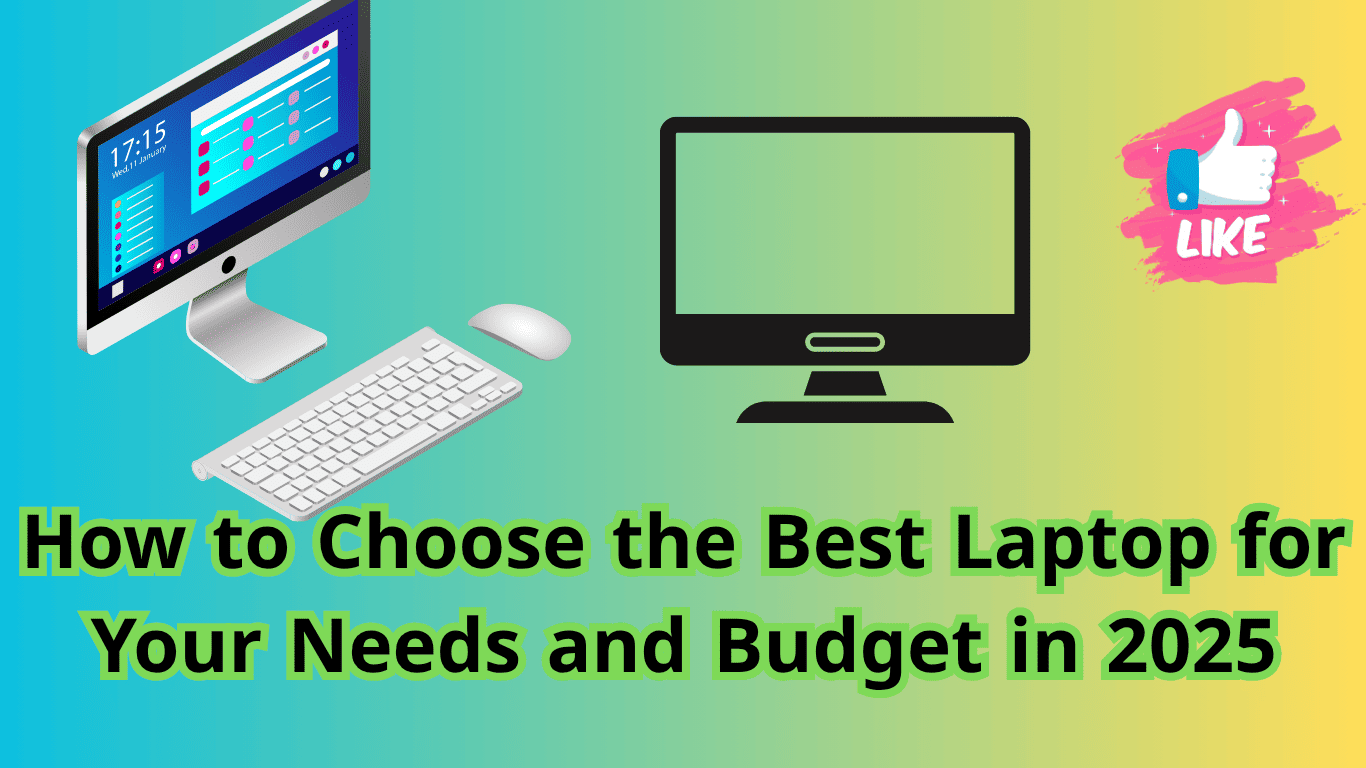How to Choose the Best Laptop for Your Needs and Budget in 2025

Introduction
In today’s fast-paced digital world, a laptop is more than just a device—it’s a daily companion for work, study, entertainment, and creativity. But with hundreds of models on the market, each boasting different specs, designs, and price tags, choosing the best laptop for your needs can feel overwhelming.
This guide will wall the factors you n before ma
Before diving into specifications, you should first identify why you n. Diffe
For Students: Lightw
For Busin Reliable performan
For High-e
For Creative Pro Powerful CPU/GPU, colo
For General Use: Balanced specs, budget-friendly.
2. Choose the Right Operating System
Your operating system (OS) shapes your overall laptop experience. The three main options are:
Windows
Most versatile and widely used.
Supports a huge variety of software and games.
Great for productivity and gaming.
macOS
Exclusive to Apple’s MacBook series.
Smooth, user-friendly interface.
Great for creative work like video editing and design.
ChromeOS
Lightweight and budget-friendly.
Best for web-based tasks.
Great for students or casual users.
💡 Tip: If you rely on specific software (e.g., Final Cut Pro, AutoCAD, etc.), make sure your OS supports it.
3. Laptop Specifications to Consider
a) Processor (CPU)
The CPU is the brain of your laptop.
Intel Core i3/i5/i7/i9 – Common in Windows laptops, with higher numbers offering better performance.
AMD Ryzen 3/5/7/9 – Excellent multitasking and gaming performance.
Apple M1/M2/M3 Chips – Highly efficient, powerful, and great for battery life.
For basic tasks, an Intel i3 / Ryzen 3 is enough. For gaming or heavy workloads, aim for i7 / Ryzen 7 or higher.
b) RAM
4GB – Basic browsing and light use.
8GB – Recommended for most users.
16GB+ – Best for professionals, gamers, and multitaskers.
c) Storage
HDD (Hard Disk Drive) – Cheaper, more storage, but slower.
SSD (Solid State Drive) – Faster boot times and performance.
Hybrid – Combination of SSD for speed + HDD for capacity.
For best performance, choose at least 256GB SSD.
d) Graphics Card (GPU)
Integrated Graphics – Good for casual use.
Dedicated Graphics (NVIDIA/AMD) – Necessary for gaming, 3D rendering, and video editing.
e) Battery Life
If you travel often, aim for a battery life of 8+ hours.
f) Display
Resolution: Full HD (1920×1080) is standard. 4K for creative professionals.
Refresh Rate: 60Hz is standard, 120Hz+ for gaming.
Brightness: 300+ nits for outdoor use.
4. Size and Portability
13–14 inches – Portable and lightweight.
15–16 inches – Balanced for portability and performance.
17 inches – Best for gamers and professionals who need a big screen.
5. Build Quality & Keyboard
If you type a lot, make sure the keyboard is comfortable and backlit. For frequent travel, a metal or rugged chassis can provide durability.
6. Connectivity & Ports
Check for:
USB-C / Thunderbolt
HDMI (for external displays)
SD card reader (for photographers)
Headphone jack
Ethernet port (if needed)
7. Budget Considerations
Budget (Under $500): Chromebooks, entry-level Windows laptops.
Mid-range ($500–$1,000): Balanced specs for most users.
High-end ($1,000+): Premium build, powerful performance, gaming, or creative work.
8. Read Reviews and Compare Models
Before buying, always check:
9. Warranty and After-Sales Support
A laptop is a long-term investment, so ensure the brand offers:
Good warranty coverage
Accessible customer support
Authorized repair centers in your area
Conclusion
Choosing the best laptop isn’t about picking the most expensive one—it’s about finding the right balance between your needs, performance, and budget. By considering your purpose, operating system, specifications, and other key factors, you can invest in a device that will serve you well for years.
Whether you’re a student, gamer, professional, or casual user, there’s a perfect laptop out there waiting for you—just make sure you know what to look for before making your decision.




